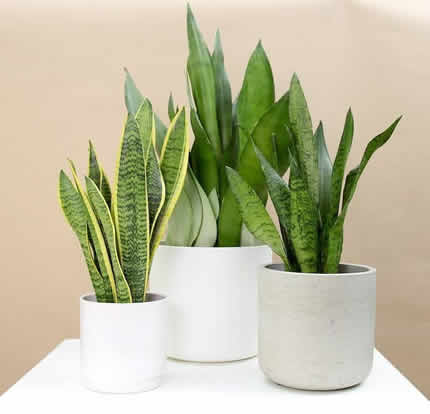Snake Plant vs Calathea: Which Plant Wins in Air-Purifying Conditions?

If you’re choosing a houseplant for cleaner air, two favorites rise to the top: the bold and structured Snake Plant, and the lush, leafy Calathea.
Both bring beauty — but which one actually makes a measurable difference in your home’s air quality?
Here’s how they stack up in every category that matters.
Table of Contents
Air-Purifying Power: Who Does It Better?
When it comes to raw air-cleaning ability, one plant stands out with the research to back it.
Snake Plant
-
Removes formaldehyde, benzene, xylene, and toluene
-
Unique among houseplants for releasing oxygen at night
-
Proven in NASA Clean Air Study for VOC removal
Calathea
-
Purifies air by absorbing toxins through its leaves
-
Increases humidity, which can ease dry skin and sinuses
-
Lacks extensive lab testing but shows solid natural filtration
The Snake Plant wins this round thanks to lab-verified results.
It’s a true air-cleaning powerhouse with added nighttime benefits.
🧪 Winner: Snake Plant
Light and Placement Flexibility
Not every home is filled with bright natural light — so light tolerance can make or break your plant’s success.

Snake Plant
-
Thrives in low to bright indirect light
-
Handles poor conditions better than most plants
-
Great for darker bathrooms or shady corners
Calathea
-
Needs medium to bright, indirect light
-
Will fade or crisp in harsh light
-
More placement-limited than Snake Plant
If you want a plant that works in nearly any room, Snake Plant is the more adaptable choice.
🌤 Winner: Snake Plant
Humidity Needs and Climate Compatibility
Depending on where you live, humidity can be your plant’s best friend — or biggest enemy.
Snake Plant
-
Tolerates dry air, heated rooms, and neglect
-
Great for apartments with poor humidity control
Calathea
-
Thrives in high humidity
-
Struggles in dry climates or near radiators
-
May need a humidifier or pebble tray
Snake Plant doesn’t flinch at changing indoor conditions, giving it a clear edge here.
💧 Winner: Snake Plant
Visual Impact and Design Style
Both of these plants are striking — but they serve very different visual roles.
Snake Plant
-
Tall, architectural leaves
-
Clean lines suit minimalist and modern décor

Calathea
-
Ornate, patterned leaves in vibrant colors
-
Adds flair to boho, tropical, or eclectic interiors
Calathea is a favorite for interior designers because of its stunning foliage.
If aesthetics matter most, it wins.
🎨 Winner: Calathea
Care and Maintenance
Let’s break down what each plant needs day to day:
| Feature | Snake Plant | Calathea |
|---|---|---|
| Watering | Every 10–14 days | Every 5–7 days |
| Light Needs | Low to medium | Medium to bright indirect |
| Humidity | Tolerates dry air | Needs high humidity |
| Difficulty | Beginner-friendly | Intermediate to high-maintenance |
As you can see, the Snake Plant is far easier to maintain — especially for beginners or busy plant owners.
🛠 Winner: Snake Plant
📘 Explore deeper:
→ Snake Plant Care Guide
📘 Explore deeper:
→ Calathea Care Guide
Pet Safety
If you live with animals, toxicity is a crucial factor to consider.
Snake Plant
🚫 Toxic to cats and dogs if ingested — must be kept out of reach.
Calathea
✅ Non-toxic and completely safe for curious pets.
Calathea wins this one easily — it’s a go-to for pet households.
🐾 Winner: Calathea
Final Verdict: Which One Should You Choose?
If you’re focused on air purification, durability, and ease of care, the Snake Plant is the clear winner.
It performs in nearly any environment, purifies better, and is far easier to maintain.
However, if pet safety and visual drama are your top priorities, Calathea offers beauty and peace of mind — as long as you’re up for a little more care.
Either way, you’re bringing home a plant that supports your health, mood, and environment.
Check out our top picks to help your plant thrive.
Thanks for reading! I'm Michael — houseplant fanatic and your Pinterest plant guide.
Follow me on Pinterest for fresh updates 🌿



